|
|
|||
THIS WEEK at HILTON POND
1-7 September 2006
Installment #327---Visitor #
(Back to Preceding Week; on to Next Week)
|
WHEN IT'S DREARY AND COLD |
|
KILLER KUDZU
Knowing our interest in native plants and our loathing for imported invasives, folks often ask us what to do if they discover the dreaded Kudzu vine growing on their property. Our response is almost always: "Unless you have access to clean nuclear explosives, it's probably best if you just sell your house and move." Indeed, once Kudzu has become established on land in the Southeastern U.S., it is seemingly impossible to eradicate this pernicious vine--all because well-meaning Japanese horticulturists brought it from their country in 1876 for a floral display in at the U.S. Centennial Exposition in Philadelphia. For a quarter century or so it was used as an ornamental in American gardens, primarily in northeastern states where cold winters kept it in check. In about 1920, however, exuberant devotees began promoting Kudzu as a forage plant for livestock, and in the 30's the Soil Conservation Service planted it extensively across the Southeast to retard erosion. Stop erosion it did, but it didn't stop there--"Killer Kudzu" began trying to conquer the Carolinas--and we're fortunate to have none growing at Hilton Pond Center.
All text & photos © Hilton Pond Center The U.S. Department of Agriculture removed Kudzu from its list of acceptable ground covers in 1953, but by then the vine had a Southeastern roothold and it was too late. Hundreds of thousands of rural acres in the Carolinas and millions beyond were covered by Kudzu, which smothers whatever stands in its path; this includes trees (below), old houses and abandoned cars, highway signs, and essentially anything else that is stationary. (We can find no reliable evidence that Kudzu--with a documented growth rate of up to half an inch per hour--can overtake small children who fall asleep in a Kudzu field. We also believe Kudzu's nickname of "Mile-a-Minute Vine" somewhat overstates the vine's growth potential.) The only thing that impedes Kudzu from creeping into metropolitan areas is constant vehicular traffic that nips off tendrils as they try to slither cross the road. (Efforts to slow Kudzu by mulching with concrete bocks and asphalt actually seem to encourage it; fertilizing Kudzu with used motor oil does NOT grease the vine and help it grow faster!) In truth, Kudzu is a scourge in some urban areas; that we've seen it even on vacant lots in downtown Atlanta is testimony to the vine's adaptability and persistence. (Kudzu, by the way, does not strangle its victims; instead, it outgrows them, climbing into the canopy and either weighing down a host tree or completely shading it out.)
If you're a gardener or wildflower enthusiast, you'll likely recognize that the shape of Kudzu's eye-pleasing reddish-pinkish-purple blossom (top photo and below left) makes it a member of the Pea Family (Fabaceae, AKA Leguminosae); or, if the half-inch flower doesn't give away its classification then its fruit (below right) surely will. Kudzu's pea flowers--which give off a dreamy fragrance reminiscent of grapes--erupt from fuzzy buds in late summer in long clusters (racemes) that may be erect or dangling. If pollinated, the flowers soon form four-inch-long fuzzy pea pods that turn brown when mature; inside are up to ten hard, half-inch seeds. In the U.S., Kudzu seeds are seldom viable--various true bugs (Hemiptera) munch on them and prevent them from germinating. Thus, seeds probably do not account for the spread of American Kudzu, which these days reproduces asexually by new shoots from its ever-growing roots.
A Kudzu leaf (below) has a fuzzy petiole that branches into three parts. The four-inch-long leaflets can be entire, or can have two lobes (as in the terminal leaflet below) or one (as in the two basal leaflets); undersides and margins of leaflets are usually fuzzy. In Kudzu's scientific name, Pueraria montana var. lobata, the variety (lobata) refers to its usually lobed leaves, the species epithet (montana) to its Asian mountain origins, and the genus (Pueraria) to the fact that Kudzu's "discoverer"--João de Loureiro, an 18th century Jesuit missionary and explorer-botanist from Portugal--seems to have thought the vine was "boyish."
Kudzu is a perennial vine arising from a taproot that, when mature, can be as big as an adult human and weigh up to 400 pounds. Such huge Kudzu roots can produce as many as three dozen vines, each snaking horizontally along the ground until it contacts a vertical surface. Then young vines--noticeably fuzzy and pale yellow-green--make their way up a supporting tree or other erect structure by extending a fuzzy but non-adhesive tendril that twines clockwise. A newly sprouted Kudzu-vine-of-the-year goes as far as it can until the first hard frost, when its deciduous leaves die and tendril growth stops. Astute readers will have noticed we made redundant use of the word "fuzzy" in paragraphs preceding, which should lead you to conclude that Kudzu is indeed a fuzzy sort of plant. Stems, petioles, pea pods, sepals that enclose developing flowers, and leaflet edges (photomacrograph below) are all adorned with some degree of fuzziness, and we suspect this is one reason Kudzu does so well. After all, if you were a herbivore, you likely would rather chomp down on smooth vegetation than graze on some fuzzy thing that would literally tickle your tongue and palate.
Even so, some things DO eat Kudzu, including various species of caterpillars that dine on leaflet blades. (A photo further up this page shows such damage.) We've also heard of cattle farmers who plant a field in nothing but Kudzu, which eventually grows to a height of about six feet before toppling over on itself. The farmer then turns his herd out into the field and won't see them again until autumn, by which time the cows are fat and happy from grazing on highly nutritious Kudzu leaves. The farmer's land is actually improved by this benevolent Kow-Kudzu synergy; not only is free fertilizer deposited in the form of Kudzu-laced Kowpies, but Kudzu is a legume that fixes nitrogen and further enriches the soil.
In its native habitat in Japan, a pernicious Kudzu infestation is about three feet in diameter--pretty ironic when we note that some Kudzu thickets in the U.S. cover a square mile or more, smothering utility poles, hardwood stands, and pine saplings (above) with no difficulty. But that's the way it is with invasive species. When horticulturists selected Kudzu stock for import into this country, they chose plants that were the most hearty and prolific and most resistant to insects and diseases. During importation they likewise were careful NOT to bring along from Japan any disease or herbivore that would affect Kudzu while it was being established as an ornamental in the U.S. Back in Japan a Kudzu root may house the ravenous larvae of several beetle species, be infested with bacteria or fungal growth, or host any number of herbivores--all of which helps keep Kudzu in check. Short of massive pesticide use, it may be the most proimising way to stem rampant growth of Kudzu in the Southeast is through biological controls. For a decade or so diligent U.S. Forest Service specialists have tried to find an insect or disease that might safely be imported to control Kudzu, but there's always the fear a new biological agent might jump from non-native Kudzu to some highly desirable native host. (For example, a fungus that has been found to kill Kudzu also affects cotton plants--certainly a no-no in the South.) In the meantime, it's interesting that any number of native species are taking full advantage of what alien Kudzu has to offer, from Carpenter Bees (above left) that harvest its prolific nectar and pollen to juvenile Carolina Anoles that use Kudzu leaves as basking platforms (below)--undoubtedly as they await the arrival of their next insect meal.
Kudzu has a valued place in its native land, where Japanese cattlemen use it for forage and bakers dig its massive root for the rich supply of starch it contains. Do WE personally like American Kudzu? No way, and although there are patches of Kudzu just half a mile way, we're very happy there's none growing at Hilton Pond Center. Can we appreciate Kudzu from a biological perspective? Yes; we marvel at its tenacity, although from an environmental viewpoint it's a nightmare for landowners in the Southeastern U.S. We have a grudging admiration for some of the good Kudzu has done--including saving tons of Piedmont soil from washing into the Atlantic Ocean or Gulf of Mexico--and from the way we've portrayed Kudzu in the photos herein, one can't deny the plant and its parts have certain aesthetic qualities. Nonetheless, please do be careful when, like us, you walk or bicycle along Carolina roads. One never knows when a tendril of "Killer Kudzu" might be poised at just the right height, waiting for some slow-moving passerby--a passerby who's nothing but a lethargic vertical surface on which the vine can twine and smother another hapless victim within Kudzu's luxurious fuzzy foliage.
All text & photos © Hilton Pond Center POSTSCRIPT: After we posted this somewhat tongue-in-cheek essay about the Superman-like ability of Kudzu to leap tall buildings with a single vine, a couple of readers alerted us to the work of the Coalition to Control Kudzu, based in Spartanburg SC. These industrious folks have been successful in employing non-herbicidal (and non-nuclear) methods for limiting growth of Kudzu, which might not be so invincible after all. We applaud their work. Comments or questions about this week's installment?
Thanks to the following fine folks for recent gifts in support of Hilton Pond Center for Piedmont Natural History and/or Operation RubyThroat: The Hummingbird Project. Your contributions allow us to continue writing, photographing, and sharing "This Week at Hilton Pond." (See Support if you'd like to make a gift of your own.)
"This Week at Hilton Pond" is written & photographed You may wish to consult our Index of all nature topics covered since February 2000. You can also use our on-line Hilton Pond Search Engine at the bottom of this page. For a free, non-fattening, on-line subscription to |

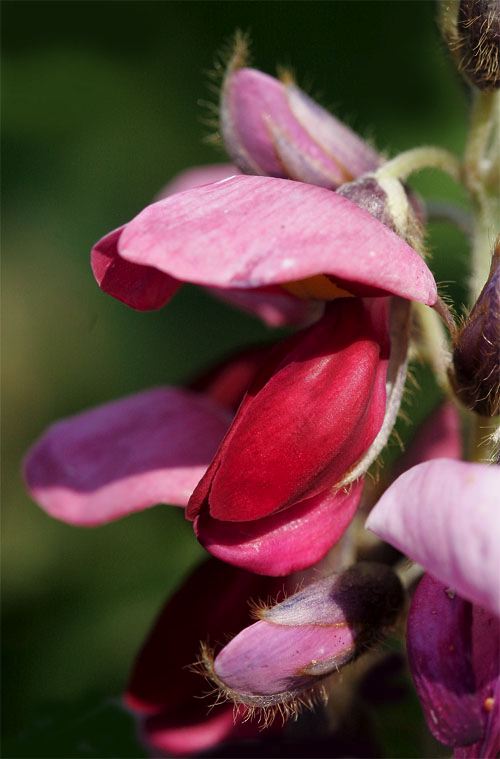
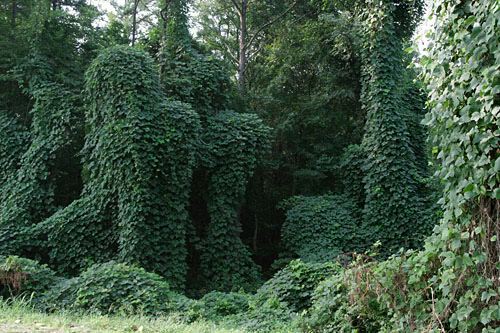
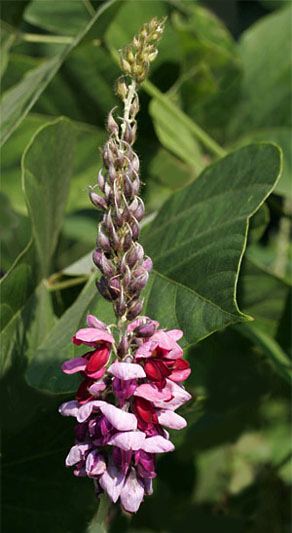 .
. 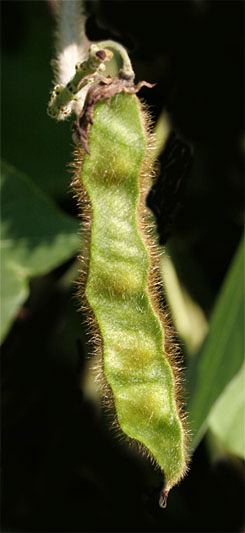
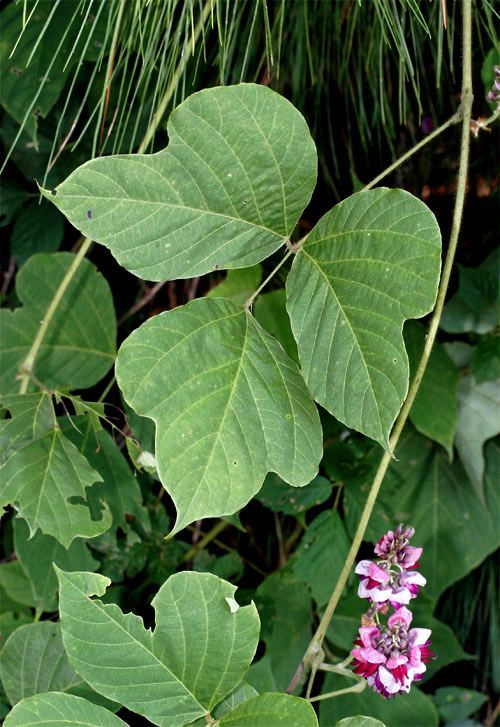
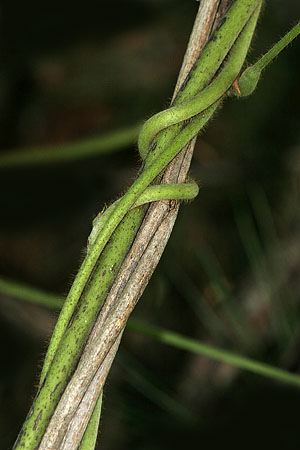 Kudzu's juices start flowing again late the next spring as the vine picks up where it left off, continuing its upward spiral and sometimes reaching heights of 60 feet or more. Kudzu tendrils aren't all that particular about what they twine around, so it's quite common in a dense thicket to see smooth, tan-colored older Kudzu vines supporting one or more generations of younger fuzzy green ones (right). Really old vines are semi-woody and can reach a diameter of four inches, by which time their bark is slightly wrinkled, darker brown, and with prominent horizontal lenticels.
Kudzu's juices start flowing again late the next spring as the vine picks up where it left off, continuing its upward spiral and sometimes reaching heights of 60 feet or more. Kudzu tendrils aren't all that particular about what they twine around, so it's quite common in a dense thicket to see smooth, tan-colored older Kudzu vines supporting one or more generations of younger fuzzy green ones (right). Really old vines are semi-woody and can reach a diameter of four inches, by which time their bark is slightly wrinkled, darker brown, and with prominent horizontal lenticels.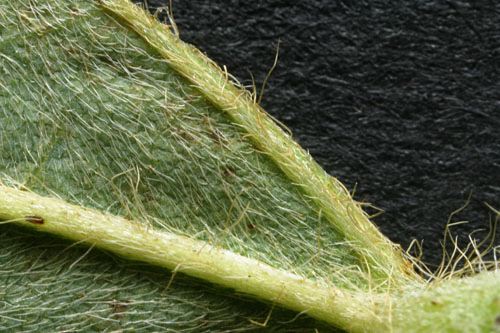
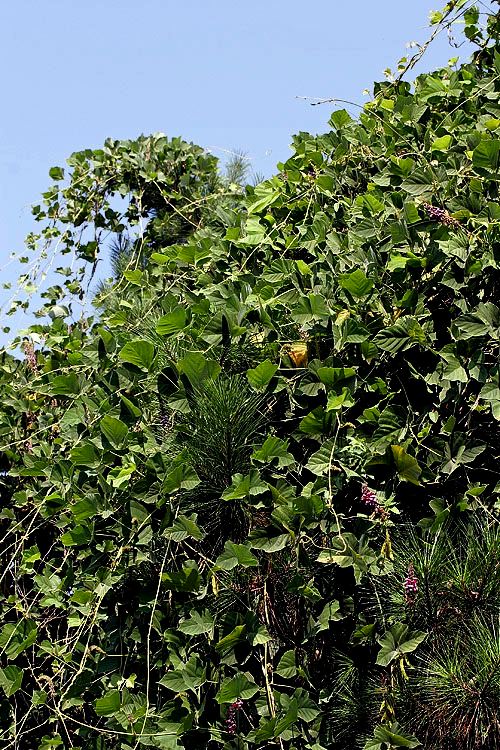
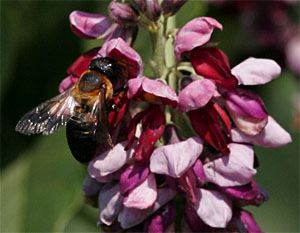 Without such limiting agents, Kudzu grows unchecked in this country--slowed only by cold winter weather. Even wildfires have little effect on American Kudzu; although aerial vines burn, the subterranean root is untouched and sprouts again after the conflagration, sometimes more vigorously than before. Incidentally, Kudzu is difficult to harvest or destroy mechanically because its tough fibrous vines quickly snarl cutting equipment, so efforts to turn it into rope or paper have largely met with failure.
Without such limiting agents, Kudzu grows unchecked in this country--slowed only by cold winter weather. Even wildfires have little effect on American Kudzu; although aerial vines burn, the subterranean root is untouched and sprouts again after the conflagration, sometimes more vigorously than before. Incidentally, Kudzu is difficult to harvest or destroy mechanically because its tough fibrous vines quickly snarl cutting equipment, so efforts to turn it into rope or paper have largely met with failure.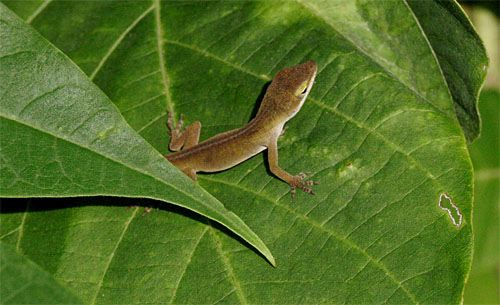
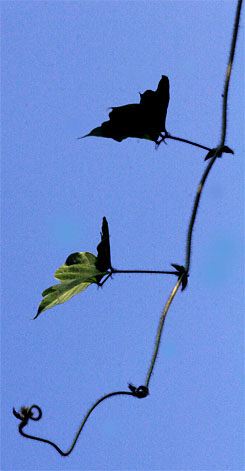


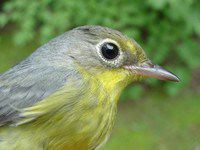
 Please report your
Please report your
